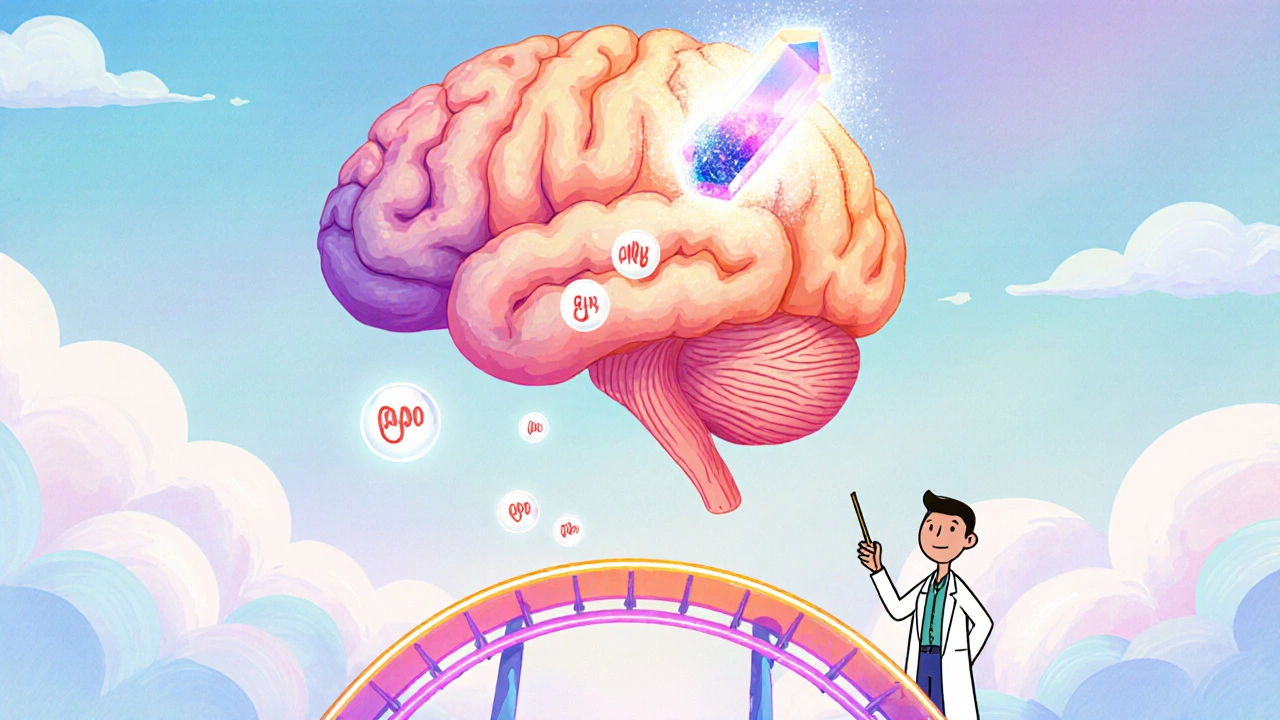Valproic Acid and Bipolar Disorder: What You Need to Know
When working with Valproic Acid, a broad‑spectrum anticonvulsant also prescribed as a mood stabilizer for bipolar disorder. Also known as Depakote, it helps balance brain chemistry by increasing GABA levels and reducing excessive neuronal firing. Bipolar Disorder, a mental health condition marked by extreme mood swings often responds to this medication, while the drug also treats Seizure Disorders, conditions like epilepsy where uncontrolled electrical activity causes convulsions. Understanding these links helps you see why valproic acid bipolar therapy is a key part of many treatment plans.
How Valproic Acid Works as a Mood Stabilizer
The core of valproic acid’s effect is its ability to boost the inhibitory neurotransmitter GABA. By raising GABA, the drug dampens the rapid firing that can trigger manic episodes. This action also underlies its seizure‑preventing power, creating a dual benefit for patients who have both bipolar symptoms and epilepsy. The relationship between Mood Stabilizer, any medication that reduces mood volatility and brain excitability is a classic example of a subject‑predicate‑object triple: Valproic Acid is a mood stabilizer that reduces manic spikes. Clinicians often choose it when other stabilizers, like lithium, either don’t work or cause unwanted side effects.
When you start a new regimen, the doctor will usually begin with a low dose and increase gradually. Typical maintenance doses for bipolar disorder range from 750 mg to 1500 mg per day, split into two or three doses. Blood level monitoring is crucial because the therapeutic window is narrow; levels between 50–100 µg/mL are generally targeted. This monitoring ties directly to the Therapeutic Drug Monitoring, a process that checks medication concentrations in the blood practice, ensuring efficacy while avoiding toxicity.
Side effects can feel like a trade‑off, but knowing them ahead of time makes management easier. Common issues include weight gain, tremor, and gastrointestinal upset. More serious concerns involve liver enzyme elevations and rare cases of pancreatitis. Because valproic acid metabolizes through the liver, regular liver function tests are part of the monitoring routine. The drug’s impact on blood clotting—through reduced platelet count—means clinicians also keep an eye on complete blood counts, especially if you’re on blood thinners.
Pregnancy adds a layer of complexity. Valproic Acid carries a known risk of neural‑tube defects in newborns, so many doctors advise switching to an alternative before conception if possible. This recommendation reflects a broader Risk Management, the practice of weighing medication benefits against potential harms strategy that applies to all mood‑stabilizing drugs. If a switch isn’t feasible, high‑dose folic acid supplementation and specialist obstetric care become essential parts of the plan.
Drug interactions can surprise even seasoned patients. Valproic Acid can raise levels of other medications like lamotrigine, while some antibiotics and oral contraceptives can lower its effectiveness. A common interaction to watch is with aspirin or other NSAIDs, which may increase bleeding risk. Keeping a personal medication list and sharing it with every prescriber helps catch these issues early, reinforcing the Medication Reconciliation, the systematic review of all drugs a patient takes process.
When side effects become intolerable, tapering off valproic acid should be done slowly to avoid rebound mood swings or seizure spikes. Most clinicians recommend a reduction of 25 % every one to two weeks, paired with a substitute mood stabilizer if needed. This gradual approach illustrates the principle that “the same drug that stabilizes mood can also destabilize it if withdrawn abruptly,” a key lesson for anyone navigating long‑term psychiatric care.
Below you’ll find practical articles that dive deeper into each of these topics—from dosing tables and lab‑test schedules to real‑world tips for coping with weight changes. Whether you’re starting valproic acid, monitoring an ongoing regimen, or considering a switch, the collection offers clear, actionable insight to help you stay in control of your health.

